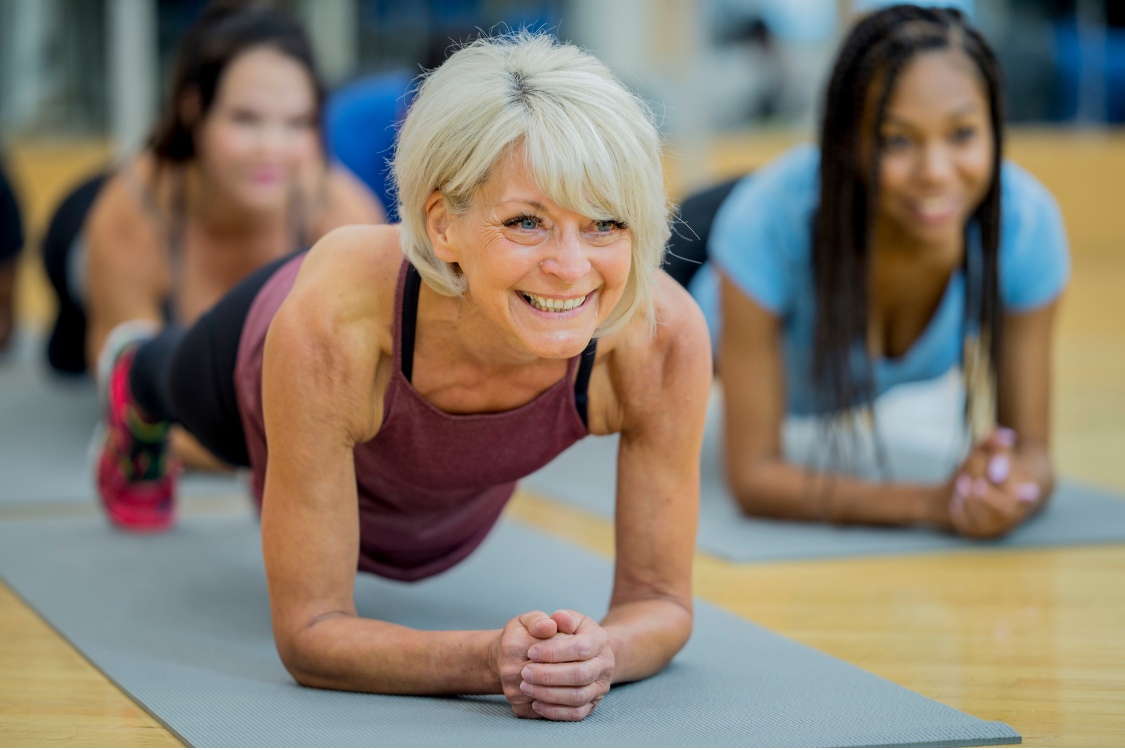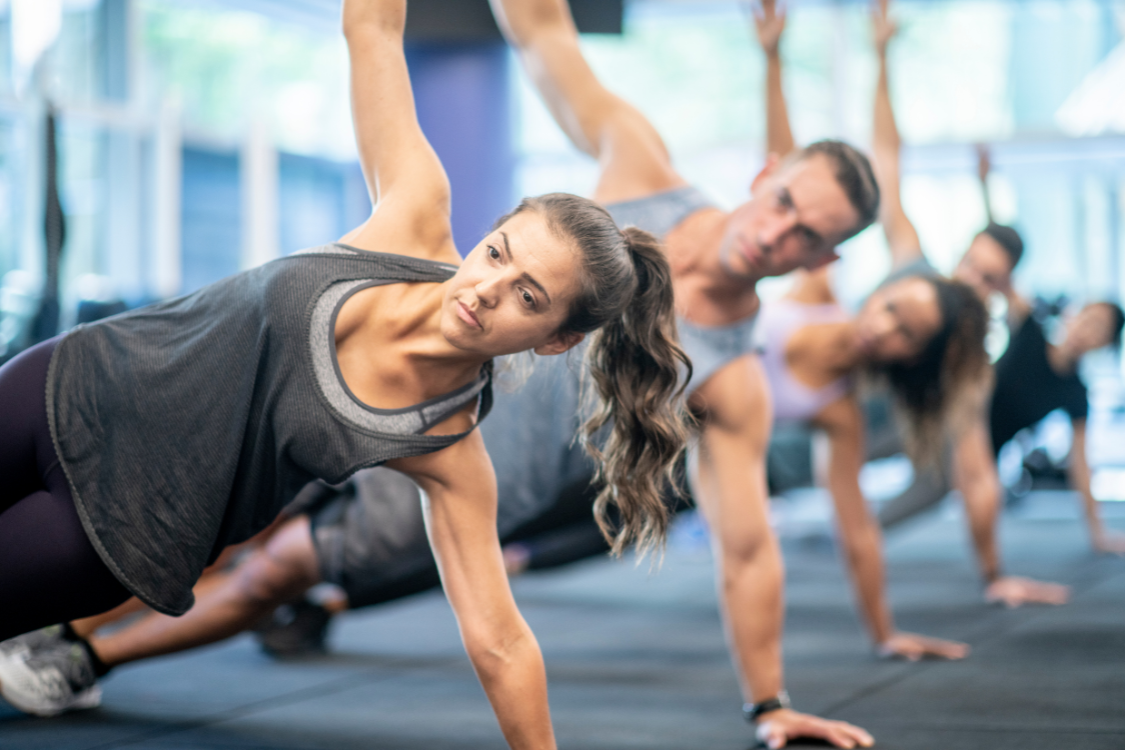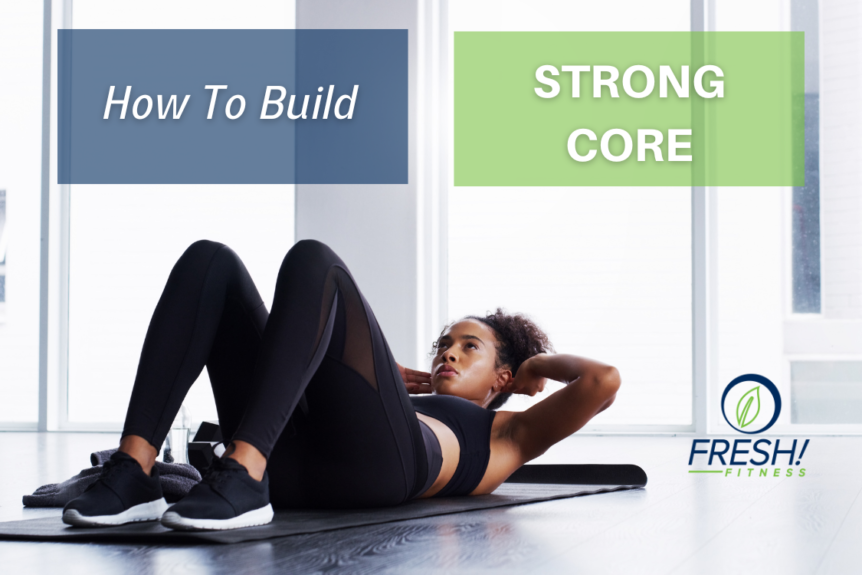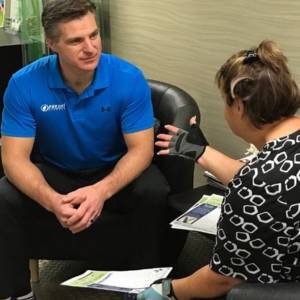Today’s post will answer the common question (thanks to FRESH! Community member Kimberley for submitting it), how do you best build a strong core? The simple (and somewhat cheeky) way to answer this question is: “Do core exercises on a regular basis”.
The longer and more involved answer requires defining what “The Core” is, and understanding what you mean by “strong” core. Do you mean being able to do a standard plank for 30 seconds, or to do something like a front lever or human flag? This is similar to saying…I want to get “fit”.
Who is fit, an elite marathon runner, or a competitive Olympic Lifter? Would either one be “fit” related to the other sport? Probably not. That’s why specificity is important.

So, what is “the core”?
The answer will be different for everyone, and what the answer is will determine the best way to accomplish that objective. While this may seem self-explanatory, it’s something few people take the time to understand and answer for themselves. It’s at the heart of why so many people struggle to reach their fitness goals.
The more specific you can be with what you want to accomplish, the easier it will be to identify the optimal plan. Then it’s simply a matter of “working the plan”. As for the definition, most people think of their core as “abs”. While the abdominal muscles are part of “the core”, they are only one component of a much bigger picture.
The practical/working definition of the core that I use with clients is “everything from your armpits to your knees.
Because the body is an integrated system of highly interconnected components, focusing on the isolation of specific muscles is a limiting approach. The following information may not seem related to “the core”, but trust me, understanding it is essential to improving your health, fitness, and function in every area of life…including building a strong core.
The more modern, and increasingly accepted definition of the body (originally posed by Thomas Myers in his book Anatomy Trains) is that the body is a big ball of fascia, filled with bones, ligaments, tendons, and muscle.
Fascia is a type of connective tissue pervasive throughout the body…think of the shiny stuff on the outside of a chicken breast. It responds slowly over time based on common body positions and repeated patterns of activation across the body. These activation patterns follow what Thomas Myers calls “fascial lines” or “myofascial meridians”.

Here are a few quick examples
A baby is not born with an IT Band (iliotibial band – a collection of fascia on the later upper leg). This fascia develops over time with the repeated and coordinated contraction of the glutes, quads, hamstrings, and other related movements of the hip/back/core.
Babies who for some reason do not learn to crawl or walk will fail to develop an IT band in the traditional way. Adults who have an injury that makes them limp for a prolonged time will begin to develop fascial changes that impact movement long after the injury has healed.
For example, if your hamstrings are “tight”, you may have realized that stretching them doesn’t usually work over the long term. You can get the same or better immediate flexibility results by rolling a golf ball (gently) or lacrosse ball for a couple of minutes on the bottom of your feet (part of the superficial backline). Self-massage on the arch of your foot can work the same.
Try it out. I bet you will be able to flex further forward.
Alas, these “flexibility/mobility” benefits are temporary unless you commit to consistently moving through increased ranges of motion (Yoga, stretching, activity, exercise, sport, etc.)
The above examples show the interconnectedness of our body. By now, you may also be starting to see the connection to building a “strong core”!
Isolating the abdominal muscles and making them work hard may be helpful for challenging a specific muscle. However, unless you understand how those muscles integrate with the rest of the body and contribute to effective movement through fitness and life, you can actually make a situation worse and get further from your goals by performing too many isolation-based exercises.
This is particularly true for anyone who sits for a living (works at a computer, sits in a chair for most of the day, drives for long hours, etc.).

How to build a strong core
Working the traditional abdominal muscles and hip flexors in this case without a determined focus on integrating correct alignment and activation through foundational movement patterns is a recipe for injury, back pain, and limited mobility.
So, with this information in mind, I can now answer the original question “How do I best build a strong core”.
The answer is to get very good at moving your body through each of the 7 primal movement patterns.
Here is a video playlist to help you with 7 Primal Movement Patterns!
Aim to do more FULL BODY motions through a full range of motion, in lots of different angles.
Our Movement Foundation Course – Functional Skills for Fitness & Life, will help you reach your goals!

Doing numerous variations of these 7 primal movement patterns will stimulate all 12 of the myofascial meridians (including the abdominal muscles). As you gain competence and confidence with these patterns, keep challenging yourself to do more difficult and advanced variations.
The good news is that you won’t need to spend countless hours doing ineffective traditional abdominal exercises!!! In fact, you don’t have to do traditional “core” exercises again.
By integrating the body, challenging yourself with increased load/difficulty, and doing this consistently over time, you will build a strong, functional (and great-looking) “core”. Your workouts and movement sessions will take half the time and you will get twice the results.
Each person is at a starting point in their movement journey and will benefit from slightly different variations and focus, but here are a couple of videos that will get you started in your journey of building a strong core.
The best option is to book a Functional Movement Analysis with one of the FRESH! coaches to find out where you are starting.

Make sure to follow us on Facebook, Instagram, and YouTube, for more health and fitness tips and tutorials.
We share the lifestyle we love!


